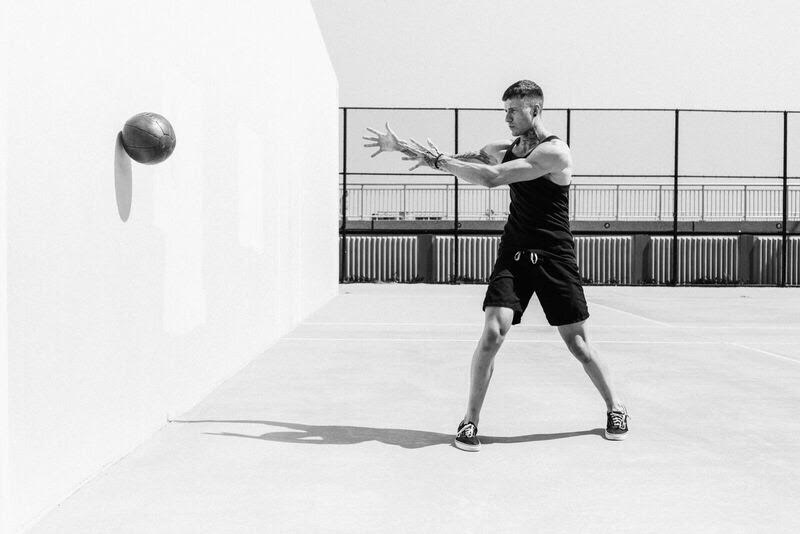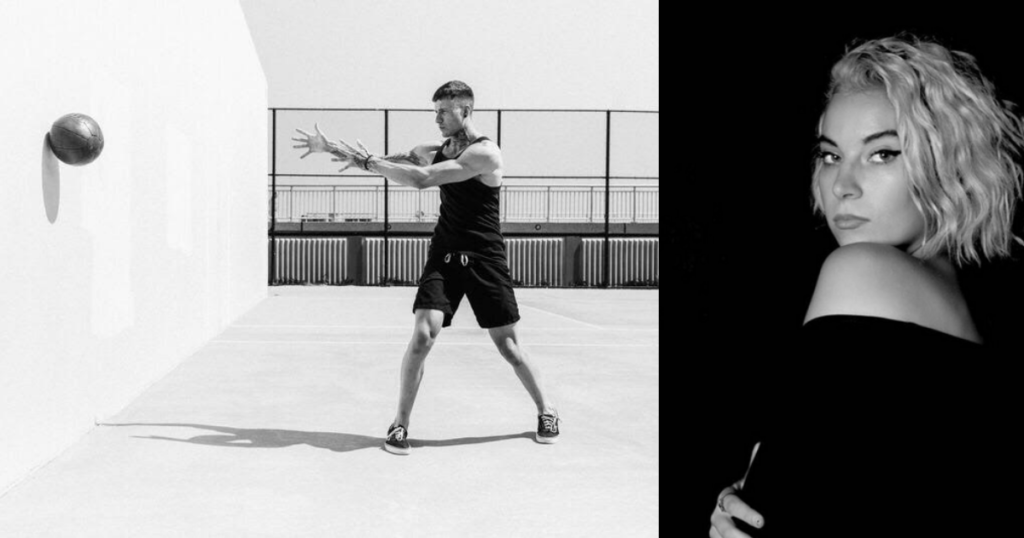Most people look at exercise as something that’s solely physical, but it actually plays a much bigger role mentally than you might think.
Spoiler alert: exercise is good for more than just staying physically fit.
You can use exercise to relieve your anxiety!
There’s an undeniable link between mental health and working out.
Anyone and everyone can benefit from the physical and mental effects of working out – whether you choose to get your blood pumping with some cardio or something a little more tame like yoga.
Find something that you enjoy. It has to fit your lifestyle to be an asset to your metal health. You want to be able to immerse yourself.
Which Exercise is Best for Anxiety?
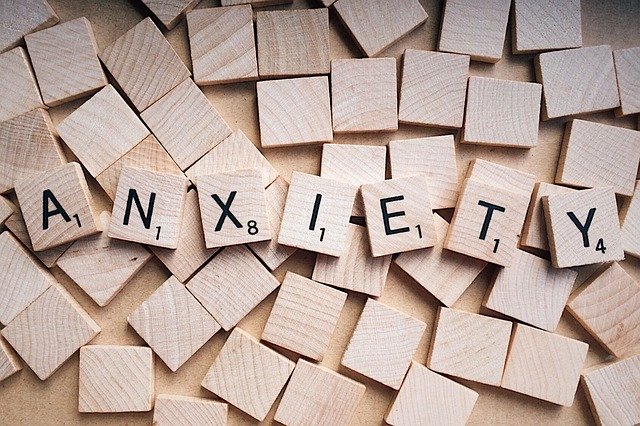
Plenty of science backs it up.
Exercise is super beneficial for people with anxiety.
We aren’t saying exercise is a cure for anxiety, but we are saying that it can help to regulate at least some of your anxiety and the physical symptoms that come along with it.
And you don’t have to work out for hours on ends to feel the benefits.
According to the Anxiety and Depression Association of America, even as little as five minutes of aerobic exercise can bring on some anti-anxiety effects.
No matter what type of exercise you choose, you’re sure to benefit both physically and emotionally to reduce your anxiety.
Here, we’ll break down 3 of the best types of exercise according to research and discuss how they can help with anxiety.
The 3 Best Types of Exercises for Anxiety
If you’ve experienced moments of high anxiety or panic attacks, you’ve likely felt that dreaded shortness of breath and racing heart.
A racing heart can feel really scary when you’re just sitting there and not doing anything that would logically cause your heart to race.
So, what can you do? You can do some good old fashioned cardio to take control of your heart.
Cardio for Anxiety Relief
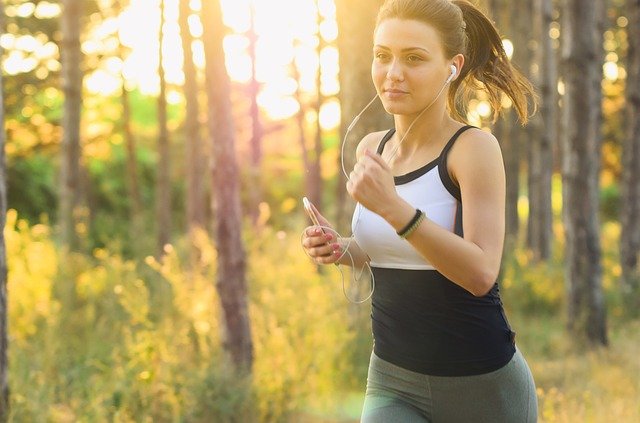
Although it may seem counterintuitive to elevate your heart rate intentionally when you have anxiety, by doing so you are able to teach yourself internal regulation over time.
Heart rate elevation from anxiety is sympathetic nervous system based (i.e. the part of your nervous system that’s related to your fight-or-flight response).
But by purposefully facilitating the sympathetic, you make the conscious choice to cause the reaction, and subsequently, you can take back some control of your bodily functions.
Plus, according to Harvard Medical School, raising your heart rate makes it possible for your brain chemistry to change in a way that boosts anti-anxiety neurochemicals.
Cardio is famously associated with the release of endorphins, which are feel-good chemicals.
You may have heard of a runner’s high – it’s real!
This can help regulate and boost your mood, especially if you exercise regularly.
While cardio is most linked to endorphin release, most forms of exercise broadly increase endorphin production and thus regulate mood.
You can go on a run outside or on the treadmill, or do something as simple as jumping jacks or running in place when you’re having a panic attack.
Furthermore, you can utilize cardio as a prophylactic treatment to anxiety.
Let’s say for example you have panic attacks cyclically before bed.
One strategy may be to perform a bout of cardiovascular exercise a few hours before bed – thus setting the stage for a restful sleep powered by the bliss of endorphins.
You don’t even need to experience full on panic attacks to benefit from the benefits of exercise.
Perhaps, you just have free floating anxiety that keeps you hyper vigilant and always on the verge but never succumbing to an attack.
Well, the good news is that cardiovascular exercise may be able to induce a frame shift for the better with respect to your general affect.
While the science behind cardio and stress reduction suggests a hormonal casual relationship, one may argue that the ritual of exercise itself in part, contributes to the beneficial effects of movement.
Yoga for Regulating Anxiety

The reason that yoga is a beneficial exercise for anxiety is twofold.
First, it is physical. Yoga poses and flows can help you build strength, increase flexibility, and improve your balance.
Even yoga classes that aren’t really fast-paced will likely still raise your heart rate.
Second, it’s mental.
There is a meditation-like component to yoga, since breath is a huge part of it.
In fact, some yoga teachers will go so far as to say that the breath is the most important part of the practice, not the movements.
Yoga requires you to focus on your breath and link your movements to your breath.
Whether you’re taking a class in person or through YouTube, your instructor will likely give you breathing cues to go along with the postures that you will flow through.
This is great for people who hate traditional breathing exercises or meditation, since it isn’t just sitting there with your breath.
Deep breathing – whether during a yoga practice or a straight-up breathing exercise – can help activate the parasympathetic nervous system, the part of the nervous system that’s associated with relaxation, and the opposite of the sympathetic nervous system, which we mentioned earlier.
Plus, studies have been conducted by researchers that have confirmed the mental health benefits of yoga.
One recent experiment showed a dramatic decrease in stress, anxiety, and even depression after 12 yoga sessions.
You can do yoga anytime, anywhere.
While a yoga mat is helpful, you don’t necessarily need any other equipment, and there are tons of videos available on YouTube – even hour-long classes – so you can practice at home for free.
Exercise for Anxiety: Strength Training
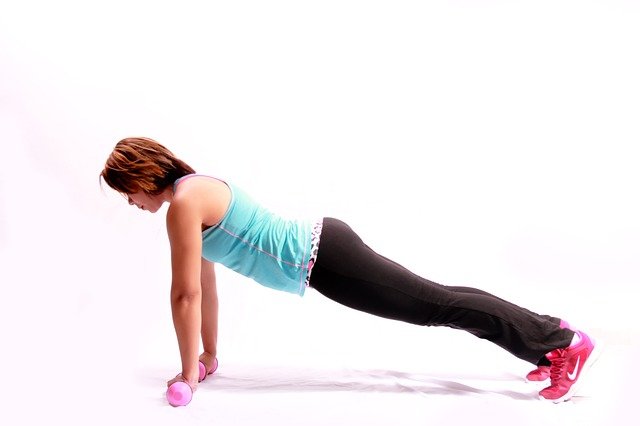
Cardio or yoga not your thing?
No worries, you’ve still got another option that is scientifically proven to help with anxiety – bonus points if you want to also get physically stronger!
First and foremost, the literature is clear when it comes to the benefits of strength training for anxiety relief.
A meta-analysis (basically an analysis of a bunch of different studies/experiments on the same topic) analyzed a whopping 922 participants, and guess what they found?
Resistance training (AKA weight training) significantly reduced anxiety in those who participated.
There have been many other analyses which have resulted in similar findings.
No study result can really benefit you unless you try it!
Get out there, hit the weights and see if it works for you.
You may just have found your drug free alternative to anxiety relief.
Stronger Muscles for Anxiety Relief
The theory of progressive overload in exercise science suggests that a gradual increase in stimulus is necessary to facilitate physiological changes.
What stimulus are we talking about?
Well it could be the amount of weight lifted, the amount of sets performed, or the complexity of the movement.
Although you may not be interested in setting a new world record, the application of these principles will aid you in gaining confidence and ultimately control over your anxiety.
Gone are the times when there was an emphasis on the mind body split.
We now understand that the two are intrinsically linked. Make your muscles stronger to make your mind stronger!
How Often Should You Exercise for Mental Health Benefits?

As we mentioned earlier, even just five minutes of exercise can make a difference and can help in the immediate short-term future, especially in times of extra high anxiety.
Even a few sets of a weight training exercise or jog around the block can be immensely advantageous.
But if you want to make a lasting effect on your mental health, you should exercise regularly.
Make exercise a part of your routine.
Make it a part of your lifestyle.
Step into your body and gain agency over your mind.
A good rule of thumb is to start off slow and gradually increase the amount of movement you do.
This prescription will apply differently to everyone, but broadly speaking – you want to start off at a medium effort level and low frequency.
Then, when you begin to feel stronger, you can gradually progress to doing more over time and this will allow you to reap the benefits of the adaptations that ultimately you are looking to achieve.
Best Time to Exercise For Anxiety
I would suggest exercising when you first begin your day.
It doesn’t have to be super early or anything, just some time shortly after you wake up.
This will set you up for a long lasting endorphin high that will regulate your anxiety for the rest of the day.
I find that when I exercise in the morning, I am able to focus on my daily tasks without anxiety getting in the way.
Of course, it is by no means a necessity to exercise in the morning for anxiety relief.
Experiment with what works for you and through trial and error, you will find what you prefer most.
Exercise Is the Best, Period!
There’s really no reason why you shouldn’t exercise.
It’s all pros, no cons.
Along with whatever your current treatment plan is for managing your anxiety, exercise can be an amazing supplement to regulate your anxiety and overall mental health.
So what are you waiting for?
Anxiety relief is right within your reach – you’ve just gotta get out there and get moving.
What’s Next?
If you are looking for more help on your fitness and health journey, RozeFit publishes weekly articles which you can find under the blog section of our website
About the authors: Ashley Laderer is a mental health advocate and freelance digital journalist and Jakob Roze is a Strength Coach and the founder of RozeFit. Ashley and Jakob have both struggled with anxiety and hope this article offers solutions to those who also struggle with anxiety.

